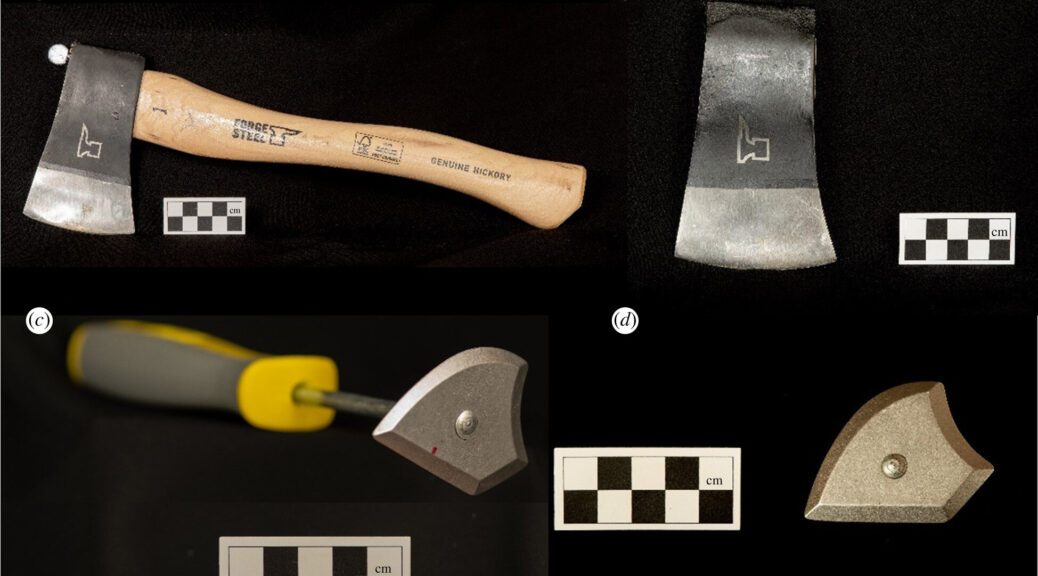Experiments show why early humans began adding handles to tools
A team of researchers at the University of Liverpool has tested the assumption that hafted tools (those with handles) provided early humans with enough benefit to warrant their construction and use.

In their paper published in Journal of the Royal Society Interface, the group describes how they enlisted the assistance of several volunteers to help them learn more about the types of benefits to be gained from hafted tools.
For many years, the wheel has been named as the most important invention humans have ever come up with due to the major impact it had on the development of so many early activities such as industry, transport and agriculture.
In this new effort, the researchers suggest the invention of hafted tools might have been equally important.
By adding a handle to tools, humans stabilized their existence—handled tools made cutting down trees much easier, which led to the development of wooden structures.
They also made hunting more efficient by making it a lot easier to sharpen spears.
In this new effort, the researchers noted that little work has been done to learn more about the advantages given to early humans by hafted tools. And that led them to conduct tests of their own.
The work by the researchers entailed enlisting the assistance of 24 male and 16 female adult volunteers to conduct early human type activities using both hafted and unhafted tools—each was fitted with a suit holding sensors that measured motion, muscle contractions, oxygen consumption and the speed at which tools were moving through the air.
The volunteers were asked to attempt to chop down a simulated tree using axes with and without handles and to try to scrape away fibres on a carpet that simulated an animal hide using scrapers with and without handles.
In looking at the data from the tests, the researchers found that the hafted tools allowed for a greater range of motion, the use of more muscle and a greater impact speed, which resulted in more force.
And while the use of the hafted tools required much more exertion, the payoff more than outweighed the cost.
The researchers conclude by suggesting that their tests showed that the benefits obtained from hafted tools almost certainly contributed to their invention and spread in early civilizations.
